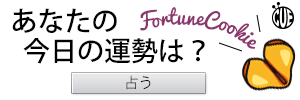5フレーズ英語で伝える日本文化|
箸渡し Passing between chopsticks
外国人に英語で説明しよう

子供の頃、食べ物を自分の箸で取り他の人の箸に渡そうとしたら、縁起が悪いと怒られたことはないでしょうか。これは、お葬式で行われる「箸渡し」(はしわたし)の儀式と似ているからだそうで、「嫌い箸」(きらいばし)または「忌み箸」(いみばし)と呼ばれ、マナー違反となっています。お悔み事がなければ、なかなかこの儀式について知る機会もありませんが、いざという時のためにこれがどのような儀式で、どんな意味が込められているのかを知っておくのも日本人として大切なことかもしれません。今日はこの「箸渡し」の儀式を、5フレーズ英語で伝えてみましょう。
“Hashi watashi” (passing between chopsticks) is the Japanese funeral ritual where the family members of the deceased pass the cremated bones from chopsticks to chopsticks into the burial urn.
「箸渡し」とは、死者を火葬した際に残された遺骨を、遺族が箸から箸へと渡し、骨壺の中に収める儀式のことを指しています。
There are local variations in the procedures, but in general the bones of the deceased are either picked up in pairs by a man and a woman together or handed over from person to person using chopsticks.
地域により作法はことなりますが、男女一組で遺骨を拾う方法と、一人ひとりが箸で持った遺骨を次の人に順番に渡していく方法が一般的です。

This ritual is carried out with the hope that the spirit can safely cross the Sanzu River, which is believed to run between this world and the world after death, as the expression “hashi watashi” shares the same sound with the word “bridging”.
この世と死後の世界の間を流れると言われる「三途の川」を魂が無事渡れるように、同音の言葉である「橋渡し」という思いを込めて、この儀式は執り行われます。
In this ritual, an unmatched pair of chopsticks is used, one being made of bamboo and the other of wood; it is said that this may either symbolize a man and a woman or the deep grief of loss.
この儀式で使われる箸は、1本が竹、1本が木と不揃いのものが使われますが、故人の死に動揺していることを意味するという説や、男と女を意味するという説など色々あります。

In Japan, it is considered a taboo to pass food from one pair of chopsticks to another during a meal as it is associated with this ritual.
日本では、食事中に箸から箸へ食べ物の受け渡しをすることは、この儀式を連想させるため、タブーとされています。



















